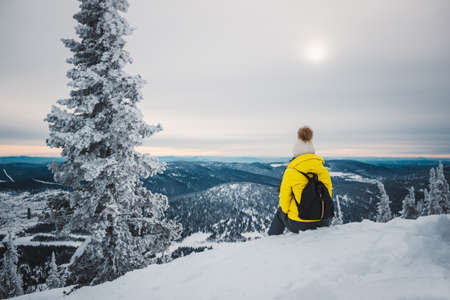Defining Day Hikes and Backpacking Trips
Before hitting the trail, it’s important to understand the basic differences between a day hike and a backpacking trip. These two outdoor adventures may sound similar, but they require different levels of planning, commitment, and gear. Let’s break down what sets them apart in a way that’s easy to follow for anyone exploring America’s vast natural spaces.
Day Hikes: Simple and Accessible Adventures
A day hike is exactly what it sounds like—an outdoor walk or trek that you can complete within a single day. Most people start in the morning and finish before sunset, so there’s no need to camp overnight. Day hikes can range from short nature walks at your local park to challenging mountain summits, but you’re always returning home (or to your car) by the end of the day.
Key Features of Day Hikes:
- Time Commitment: Usually a few hours, rarely more than 8–10 hours
- Distance: Can vary widely—from less than a mile up to 15+ miles, depending on your pace and trail difficulty
- Gear Necessities: Lightweight essentials only—think water, snacks, sunscreen, a map, and maybe a rain jacket or first-aid kit
Backpacking Trips: The Overnight Experience
Backpacking takes things to another level. Instead of just spending the day outdoors, you’ll be carrying everything you need for one or more nights out in the wilderness. This means bringing along your own shelter (like a tent), sleeping bag, food for multiple meals, and extra clothing layers. Backpacking trips often cover longer distances over several days and require more advanced planning and skills.
Key Features of Backpacking Trips:
- Time Commitment: At least one night out; trips can last from a weekend to several weeks
- Distance: Varies greatly—some backpackers cover just a few miles each day while others might hike 10+ miles daily over multiple days
- Gear Necessities: Full overnight kit—including tent or hammock, sleeping bag/pad, stove, food supplies, extra clothing layers, water filter, and safety items
A Quick Comparison Table
| Day Hike | Backpacking Trip | |
|---|---|---|
| Duration | Within one day | One night or more |
| Mileage | 1–15+ miles total | Varies; often 10–50+ miles over several days |
| Shelter Needed? | No (return home/car) | Yes (tent/hammock) |
| Main Gear Items | Packed light—water, snacks, basic safety gear | Packed heavy—camping gear, multi-day food supply, extra clothes |
| Planning Level | Basic route planning & weather check | Detailed logistics & backcountry skills required |
If you’re new to hiking or just looking for a quick escape into nature without much fuss, day hikes are perfect. For those seeking adventure and solitude deeper in America’s wild places—and who don’t mind carrying some extra weight—a backpacking trip is the way to go.
2. Essential Gear and Packing Considerations
When it comes to day hikes versus backpacking trips, the gear you bring and how you pack make all the difference. While both activities get you outdoors, their needs are miles apart. Here’s a look at what separates a casual day hike from an overnight adventure in the backcountry.
Day Hikes: Light and Simple
For most day hikes, the goal is to keep things light and efficient. You’ll likely be out for just a few hours, so you can focus on the basics—just enough to keep you comfortable, safe, and fueled until you’re back at your car or trailhead. Think minimalist: a small backpack, water, snacks, weather-appropriate clothing, and maybe a first-aid kit. No need for cooking gear or extra clothing layers unless the weather’s unpredictable.
Typical Day Hike Packing List
| Item | Purpose |
|---|---|
| Small daypack (10-20L) | Carries essentials without weighing you down |
| Water bottle or hydration bladder | Stay hydrated on the trail |
| Trail snacks (energy bars, fruit) | Quick energy during your hike |
| Weather-appropriate layers (jacket, hat) | Protection against sun, wind, or rain |
| Sunscreen & bug spray | Skin protection from sun and insects |
| Map or GPS app | Navigation support |
| Basic first-aid kit | Treat minor injuries quickly |
| Headlamp or flashlight (optional) | If there’s any chance you’ll be out after dark |
Backpacking Trips: Prepared for Anything
If youre heading out for a multi-day trek, your gear list grows—and so does your pack weight. Backpackers have to think about sleeping arrangements, meals, extra clothing, and more robust safety supplies. The trick is balancing comfort with necessity; every item should earn its spot in your pack because youll be carrying it all the way. Multi-day trips mean thinking ahead for changing weather, emergencies, and being self-sufficient far from help.
Typical Backpacking Trip Packing List
| Item | Purpose |
|---|---|
| Larger backpack (40-70L) | Room for food, shelter, clothes, and extras |
| Tent or shelter system | Your home in the wilds overnight |
| Sleeping bag & pad | Stay warm and comfortable through the night |
| Cooking gear (stove, fuel, pot) | Prepare hot meals and drinks at camp |
| Multiple meals & snacks (freeze-dried meals, oatmeal) | Sustain energy over several days |
| Water filter or purification tablets | Treat water from streams or lakes safely |
| Extra clothing layers (base layer, insulation, rain gear) | Be ready for changing conditions |
| Larger first-aid kit & repair kit | Tackle bigger emergencies or gear issues |
| Navigational tools (map, compass, GPS) | Avoid getting lost off-grid |
| Headlamp + spare batteries | Your main light source after sunset |
| Bears canister or food hang setup (where required) | Keep food safe from wildlife |
| Trowel & toilet paper/waste bags (Leave No Trace) | Sustainable bathroom solutions in nature |
| Sunscreen & bug spray (higher volume) | You’ll need more for longer exposure times |
Packing Strategies: What Sets Them Apart?
The biggest difference is planning for self-sufficiency. Day hikers can often travel lighter since they’re close to help if needed. Backpackers must plan for worst-case scenarios—bad weather, injuries far from help—and carry everything required to handle them on their own. For day hikes in popular parks or near urban areas, minimalism works great. For remote backcountry routes or national parks like Yosemite or Glacier where help could be hours away, thorough packing is key.
Packing Comparison Table:
| Packing Element | Day Hike Approach | Backpacking Approach |
|---|---|---|
| Pace & Weight | Fast & light | Slower & heavier load |
| Shelter | N/A | Tent/shelter required |
| Cooking Gear | N/A or minimal | Full cook set needed |
| Water Strategy | Bring from home/trailhead | Purify as needed along route |
| Food Supplies | Snacks only | Multiple full meals |
| Navigation Tools | Phone/map | Backup map/compass mandatory |
| Emergency Planning | Basic first aid | Comprehensive kit/repair tools |
| Clothing Layers | Just enough for forecast | Extra layers for variable conditions |
| Wildlife Protection | Rarely needed | Bear canisters/food storage essential in some regions |
No matter which type of trip you choose , picking the right gear — and knowing how to pack it — sets you up for a safer , more enjoyable time outside . Both approaches have their place , but understanding their differences makes sure you re ready for whatever your next adventure throws at you .

3. Physical and Mental Preparation
When it comes to outdoor adventures, how you prepare physically and mentally can make or break your experience. Day hikes and backpacking trips each demand a different approach to training, stamina, and mindset. Here’s how the preparation varies between the two:
Physical Training Differences
| Aspect | Day Hikes | Backpacking Trips |
|---|---|---|
| Duration of Activity | Usually 2–8 hours | Multiple days, sometimes over a week |
| Packing Weight | Light daypack (water, snacks, essentials) | Heavy pack (tent, sleeping gear, food for several days) |
| Training Focus | Cardio fitness (walking, jogging), moderate strength training for legs | Endurance (long hikes with weight), core strength, back and shoulder conditioning |
| Recovery Needs | Short recovery time, often ready to go again next day | Greater focus on rest and nutrition before and after trip |
Mental Preparation and Mindset
Day Hikes: Stay Present and Enjoy the Moment
The mental game for day hikes is all about being in the moment. Since you’re out just for the day, it’s easier to stay motivated. You can focus on enjoying nature, reaching a viewpoint, or just spending quality time outdoors. If something goes wrong, help is usually not far away.
Backpacking: Build Resilience and Adaptability
For backpacking trips, mental toughness is key. You’ll need to push through long days, unpredictable weather, and the discomfort that comes with carrying a heavy pack. Being adaptable—handling changes in plans or unexpected challenges—is crucial. Backpackers often talk about building a “trail mindset”: staying positive when things get tough and knowing that small setbacks are part of the adventure.
Tuning Your Preparation to Your Adventure
If you’re new to backpacking but comfortable with day hikes, start by adding distance or elevation to your day trips. Practice hiking with a loaded backpack so your body gets used to the extra weight. For mental prep, try spending a night camping in your backyard or at a local park before heading into the backcountry.
4. Safety, Permits, and Leave No Trace Ethics
Safety: Day Hikes vs. Backpacking Trips
When it comes to safety, day hikes and backpacking trips in the U.S. wilderness require different levels of preparation. For a day hike, you’ll usually only need basic essentials like water, snacks, a first aid kit, and a map or GPS. You’re typically closer to trailheads and help is more accessible. On the other hand, backpacking trips require more advanced planning: carrying extra food, shelter, emergency supplies, and navigation tools because youll be farther from civilization for a longer period.
| Aspect | Day Hikes | Backpacking Trips |
|---|---|---|
| Distance from Help | Closer to trailheads | Remote backcountry |
| Supplies Needed | Basic essentials | Full gear for overnight stay |
| Emergency Response | Faster access to help | Self-sufficiency crucial |
Permits: Legal Permissions for Wilderness Access
Many American wilderness areas require permits, but the process can be quite different between day hikes and backpacking adventures. For popular day hiking trails in National Parks or State Parks, a simple parking pass or day-use permit might be all you need. Backpacking usually requires a wilderness permit that covers overnight stays and sometimes limits the number of people on the trail to protect natural resources. Always check the rules specific to your destination before heading out.
| Permit Type | Day Hikes | Backpacking Trips |
|---|---|---|
| Parking/Entry Passes | Often required at trailheads | Often required plus additional paperwork |
| Wilderness Permits | Seldom required unless very popular area | Usually required for overnight stays; limited availability in peak season |
| Group Size Limits | Larger groups allowed on some trails | Tighter restrictions to reduce impact on environment |
Leave No Trace: Environmental Responsibility on the Trail
The Leave No Trace (LNT) principles are foundational in U.S. outdoor culture. While both day hikers and backpackers are expected to follow these ethics, backpackers have an even greater responsibility since they spend more time in remote areas. This means packing out all trash (including food scraps), minimizing campfire use, avoiding disturbing wildlife, and camping only in designated spots when required. Following LNT helps keep America’s wild places pristine for everyone.
5. Community and Cultural Experiences
When it comes to outdoor adventures, day hikes and backpacking trips offer very different social vibes and community traditions in the U.S. Let’s break down what makes each experience unique when it comes to people, culture, and the way Americans connect on the trail.
Social Dynamics: Who You Meet and How You Interact
Day Hikes: Day hiking is often a casual, social activity. It’s common to see families, friends, or even meet-up groups taking on popular trails for just a few hours. Many people greet each other with a friendly “Hey!” or “How’s it going?” as they pass by. These encounters are usually short but friendly—think of it like waving at neighbors.
Backpacking Trips: Backpackers often spend several days or even weeks on longer trails. This creates a unique sense of camaraderie among hikers. It’s not unusual for strangers to become trail friends, sharing tips, stories, food, and sometimes even camping spots. The farther you get from the trailhead, the more likely you are to feel part of a tight-knit outdoor community.
| Aspect | Day Hikes | Backpacking Trips |
|---|---|---|
| Group Size | Larger groups, families, casual friends | Small groups, solo hikers, experienced adventurers |
| Social Interaction | Short greetings, quick chats | Longer conversations, shared campfire stories |
| Community Feel | Open and friendly but brief | Tight-knit, supportive “trail family” vibe |
Traditions and Trail Culture in the U.S.
The American Day Hiking Culture
Day hiking is deeply rooted in American weekend culture. National and state parks host thousands of easy-to-moderate trails where locals gather for exercise and relaxation. Events like “National Trails Day” invite everyone—from beginners to seasoned hikers—to celebrate nature together.
The Backpacking Tradition: Thru-Hikers and Trail Angels
Backpacking has its own rich traditions. On long-distance trails like the Appalachian Trail (AT) or Pacific Crest Trail (PCT), backpackers might adopt “trail names,” share logbooks at shelters, or experience “trail magic”—unexpected acts of kindness from local volunteers called “trail angels.” These moments build a strong sense of belonging that lasts far beyond the hike itself.
Key Elements of U.S. Hiking and Backpacking Culture:
- Trail Names: Nicknames given to backpackers on long trails.
- Shelter Logbooks: Journals where hikers leave messages for others.
- Trail Magic: Free snacks, rides, or support offered by volunteers along major trails.
- Meet-Ups & Clubs: Local hiking clubs often organize group day hikes; backpacking circles might plan multi-day trips or skill-sharing sessions.
The Role of Community in Outdoor Safety and Stewardship
No matter the adventure—short day hike or week-long trek—American hikers value the Leave No Trace principles. Both communities encourage respect for nature and fellow hikers. On backpacking trips especially, there’s a stronger tradition of helping each other out—whether that means sharing water filters or looking out for solo travelers.


